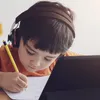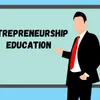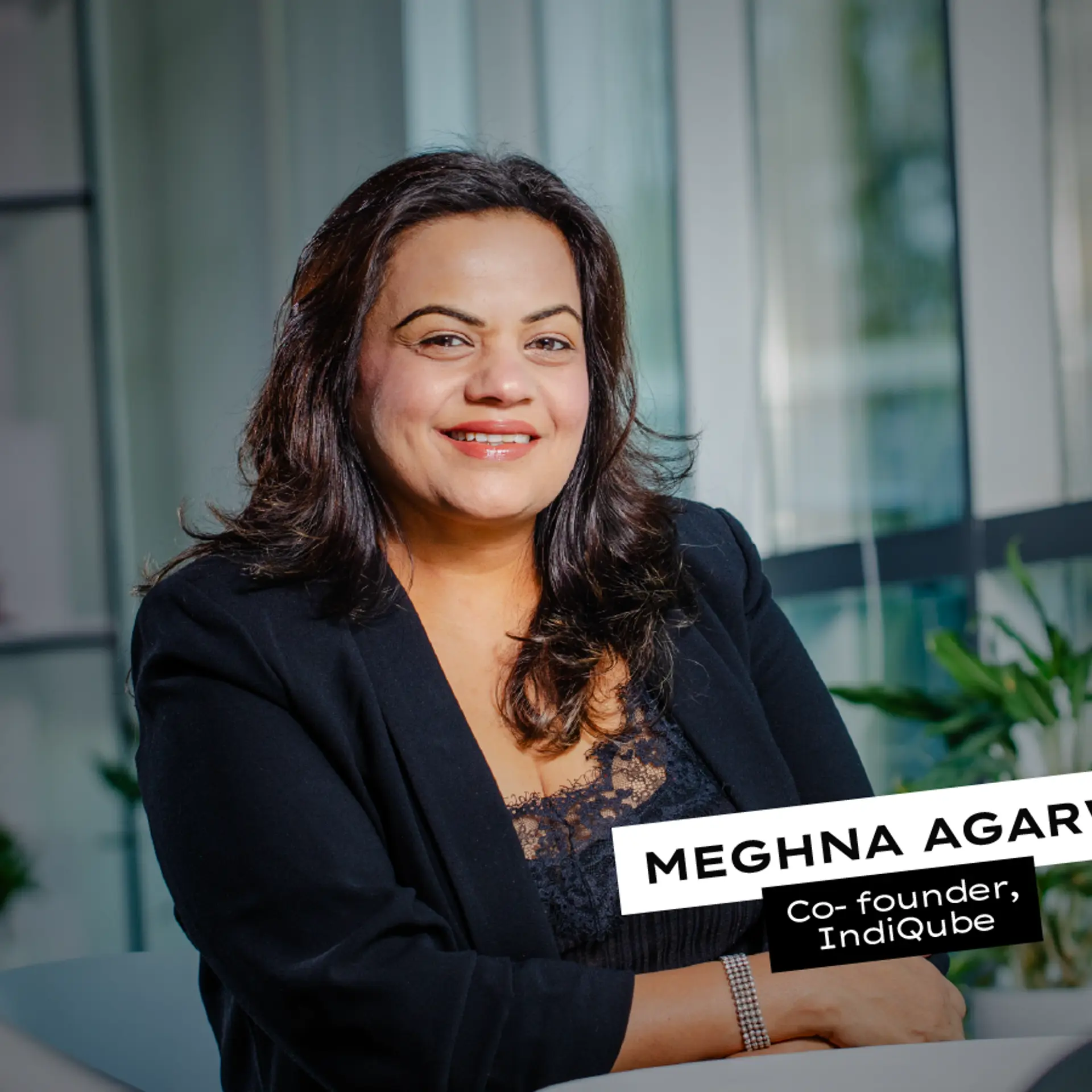What education 4.0 should look like
Education is an integral part of human development. Being rapidly updated and having already gone through three major stages, education 4.0 will use technologies that don’t exist yet, and will focus on creative thinking instead of rote-learning.

“When you have forgotten what you studied for your exams, what remains is EDUCATION.”
The world is currently in its fifth age, and is catering to the largest number of people that have ever lived here.

(C) Anand Gurnani, VAMRR Technologies

So, the question is that given these realities and several others, how do we approach education – for the present and the future?
In order to talk about the present and the future, we cannot ignore the past, and the evolution of education over the centuries.
The first known records of education (let’s call it Education 1.0) were the gurukuls of India, the academies of Greece, and other similar academies that existed the world over.
The features of this education were a Low Student to Teacher ratio, and flexible schedules and syllabi, highly personalised to every student’s requirement. This was multi-disciplinary in nature with languages, astronomy, warcraft, economics, politics, etc, all being taught by individual subject matter experts to students.
Of course, there was specialised education too – both with the choice of a subject (some students were better at art, some at dance, some at war strategy, some at cooking, some in politics, etc.) and also within a subject (which weapon will each student be proficient in).
There was almost no use of technology or mechanics, relying mostly on memory and knowledge that was passed down within a narrow lineage, with limited use of manuscripts. This led to knowledge and information that was closely guarded.
Now, this while being high-quality education, was fundamentally unscalable, and access to the same was restricted – to very few students – possibly only the very elite or the influential.
Then came the first turn of the industry when machines, handled by human labour, emerged and helped manufacturing processes scale. Analog and mechanical technology re-structured the proportion of human labour needed for any activity.
The mass-scale use of fossil fuels and the emergence of engines – steam engines, internal combustion, and jet engines – reduced the size of the world. Communication and archival systems (books) made it easy to store and transfer information and knowledge.
This coincided with the emergence of Education 2.0, which was scalable to include a large number of students. Deploying the One-to-Many broadcast mode of education, the progression of students across the years became an assembly line model.
The teacher and books were the students’ primary source of information. If you had more information, you were considered better educated or smarter (sic). Hence, automatically the focus was on memorising information, and information recall, and the same was evaluated by periodic testing.
The better you did here, the more ‘literate’ you were. The same content and teaching methodology was applied for all – no customisation or personalisation was undertaken. In all this, there was limited use of technology – primarily for student-management.
Basically, we expanded access to education but lost the core of good education – personalised, analytical, and exploratory.
Then came the next stage of the world where machines replaced human labour for several repetitive and brute-force uses. Technology re-cast the proportion of human labour needed for any activity. The emergence of the internet and cloud made storage of almost unlimited amounts of information, possible.
Digital communication rapidly accelerated globalisation. Meanwhile, a lot of non-sustenance human inputs shifted from execution and manufacturing, to design, planning, management, services, and policy.
This coincided with where we are now with respect to education – Education 3.0.
We continue to follow the one-to-many broadcast or assembly line model for the most part. The focus is still significantly on memorising information, for the most part, evaluated by annual and half-yearly testing.
For the large part, we are still continuing the uniformity and standardisation of content and teaching methodology for all, with limited customisation and personalisation.
That said, problem-solving and analytical exploration has gained equivalence to literacy and information recall. This, as well as the focus on the service industry, has led to an increased inclusion of soft skills education at the high school and higher, as well as technical level.
While teachers and books still are a key source of information for a majority of the people, we have also seen the emergence of the ‘flipped classroom’ concept, where a small percentage of institutions have changed their way of teaching.
There also has been the identification of the need for creative arts education in high school, but the deployment of that is at a very minimal level, with most of the creative arts or performing arts and sports education considered ‘extra-curricular’.
The use of technology in education has increased significantly, though not as much for actual in-classroom learning.
Now, let’s come to today’s world and try to extrapolate it to tomorrow’s.
What are the major changes we see in the world today?
Wearables, digital assistants, the cloud, and instant data access reduces the requirement for information retention.
Requirement of memorisation of anything other than concepts has almost disappeared, as has the requirement of calculation which has almost all-but-disappeared, unless it is for original-thought-research purposes.
Just like information retention is redundant now, so will a lot of lower-level problem-solving and analytical skills be in the future. Artificial intelligence and machine learning has started to take over several problem-solving and analytical aspects of life.
In many cases, AI+ML has started to completely replace human labour (eg. IBM Watson). Human skills needed will be for mostly right-brain activities, like creative thinking, which is a combination of narrative thinking + design thinking + strategic thinking + lateral thinking.
Further, the global top-10 in-demand and fastest-growing careers of 2019 did not exist in 2006. So, what will the situation will be in 2030 or 2040? A student who enrolls for a degree in 2020, at the age of 18, will be at the peak of his or her career in 2040, at age 38. What career will he or she be working in?
The first thing we have to teach all students is HOW TO LEARN. We have to make our basic education as broad-based as possible to enable students to continue to study and switch across multiple careers. The first things that students should learn when they start studying is:
“When you have forgotten what you studied for your exams, what remains is EDUCATION.”
This leads us to the core principles of Education 4.0, which are to build-in quality and scale, using technology and expertise as levers. It should be age-less, personalised, and blended learning, based on individual abilities and natural inclinations.
In Education 4.0, information should be free and freely available. It should be available through a multi-lingual repository of all the information available in the world, freely available to all students who seek it – both those who go to a structured educational institution and those who do not.
No matter what someone’s age – they should have access to all this information. Most of it is already online right now, in scattered forms on Google databases, Wikipedia (though a surprising amount of Wiki Info is just rubbish content), SlideShare, LinkedIn, Github, RSS feeds, and various other blogs and reports.
This repository will essentially be an umbrella platform that pulls in all this content, and puts it together in an academically and chronologically comprehendible, and easily consumable, format.
The multi-lingual aspect of this is extremely critical. This will ensure that the quality and quantity of information students have access to, should not and will not depend on their financial means, which institution they study in, or which teachers they have.
Further, we need to create knowledge-networks by putting together students and faculty of several institutions with industry professionals. In these networks, new ideas emerging from academia are tested in the real world and industry work breeds research and development activities in academia.
And this causes the repository to be regularly updated or upgraded by the students, faculty, and industry – basically all the players in the pipeline. This too is happening already, but at a very small level, and the output of such collaboration is available only to those people associated with the collaboration.
Students should be able to use this open information repository, and an array of teachers and mentors who possess subject matter expertise, and are trained to mentor.
Wherever possible, we should be using immersive content combined with non-fiction narrative storytelling to better explain concepts and phenomena.
There should be no annual or semi-annual examinations, but continuous output-based evaluation through the application of their learning, in environments as close to real-world scenarios as possible.
Lastly, we should try and mainstream sandwich/apprenticeship-based education which enables learners to tweak their learning on a continuous basis, based on their understanding of the real world.
Further, we also need to include ‘creative education’ in our teaching. Creativity has nothing to do with any activity in particular – with painting, poetry, dancing, singing, etc. Anything can be creative. You bring that quality to the activity. The activity itself is neither creative nor uncreative.
You can paint in an uncreative way. You can clean the floor in a creative way. You can sing in an uncreative way. You can cook in a creative way. Creativity is the quality that you bring to the activity you are doing. It is in attitude, an inner approach on how you look at life.
Creative Education needs to be brought into mainstream high school, as well as higher and technical education, on par with math, sciences, social studies, or the core higher education subjects.
We also need to include ‘right-brain’ stimulating activities (non-response-to-stimuli-activities) into high school education, with mandatory creative education from age right.
We need to create foundational education in creative thinking, as well as specialised creative thinking education which is co-learnt along with various verticals of higher/technical education.
We need to rebuild our entire curriculum from the ground up, from high school all the way to PhD and Research, to prepare more world-aware, creative individuals, who while practicing their profession or even being in employment, continue to learn and evolve and get themselves ready for the next age.
This is not an overnight process. But we need to start now with the mission statement of education 4.0 which is"Education needs to prepare students for Employment, Entrepreneurship & Research in careers that do not exist, using technologies that haven’t been invented, to solve problems that are not yet known."
Edited by Aparajita Saxena
(Disclaimer: The views and opinions expressed in this article are those of the author and do not necessarily reflect the views of YourStory.)









